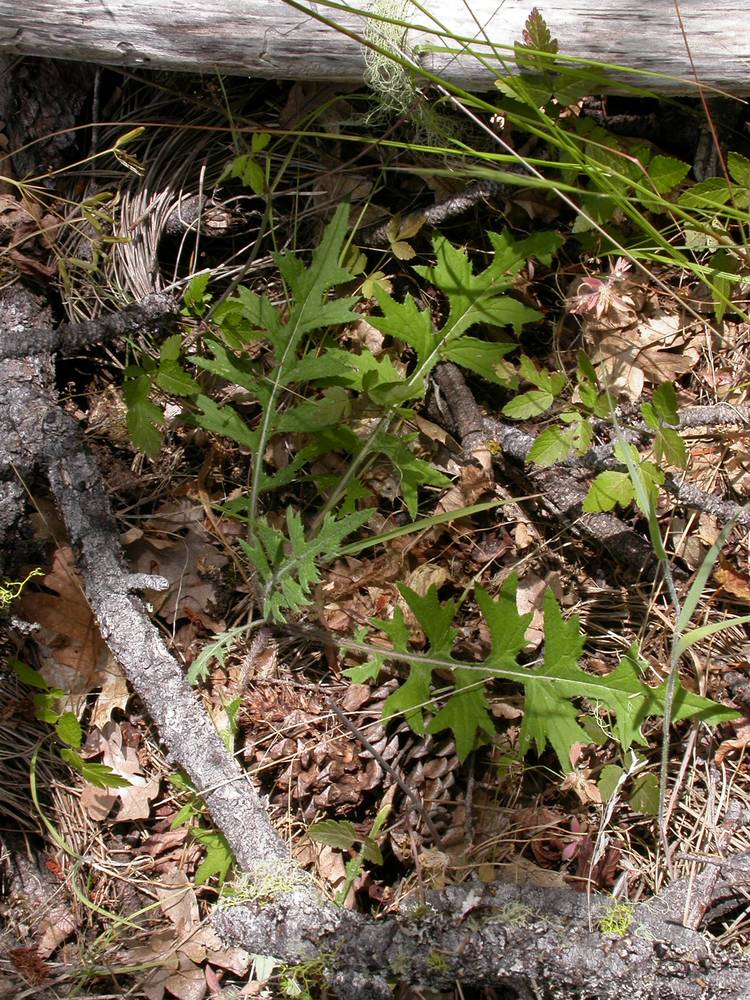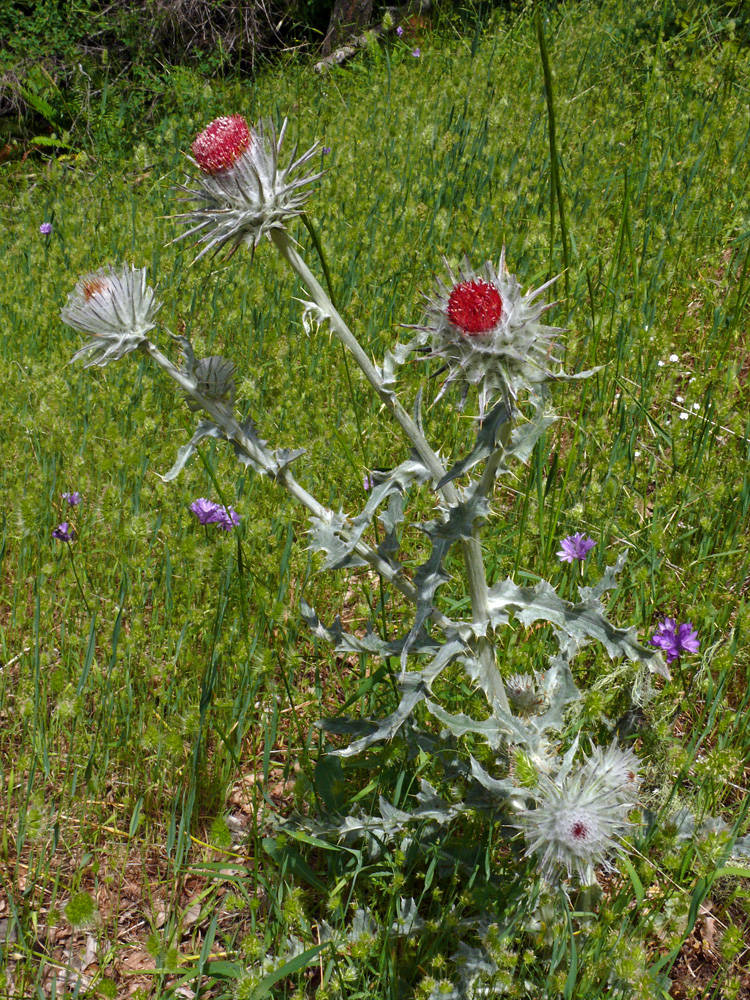Cirsium remotifolium
Cirsium occidentale
few-leaved thistle, weak thistle
cobwebby thistle, western thistle
usually 1; slender, arachnoid-villous, sometimes thinly so.
usually 1, usually conspicuously white-tomentose, rarely glabrate.
linear-oblong to elliptic, 7–35 × 1–15 cm;
margins entire to dentate or pinnately lobed;
lobes triangular-ovate to linear;
spines fine, 1–6 mm;
surfaces abaxially thinly to densely tomentose, adaxially glabrate to thinly arachnoid-villous;
basal occasionally present at flowering, sessile, clasping, or petiolate.
elliptic to oblanceolate, 6–40 × 1.5–10 cm;
margins pinnate;
lobes often with shallow teeth or again lobed;
spines weak to stout, 1–15 mm;
surfaces white-tomentose, adaxially sometimes thin to glabrate;
basal usually present at flowering, sessile, clasping, decurrent, or petiolate.
hemispheric to campanulate, 1–2.5 × 1.5–3.5 cm, glabrous to thinly arachnoid-villous.
ovoid to spherical; (2)3–7 × 2–8 cm, thinly to densely arachnoid-tomentose.
corollas 16–25 mm, cream-colored to purple;
tubes 6–12 mm;
throats 5–10.5 mm;
lobes 3.5–8 mm;
styles conspicuously exserted;
tips 4–6 mm.
corollas 25–40 mm, red, rarely white or pink;
tubes 8–18 mm;
throats 5–10 mm, gradually narrowed to tubes;
lobes 5–12 mm;
style tips 4–5 mm.
subequal to strongly imbricate, sometimes with inconspicuous glutinous ridges;
spines 1–6 mm; outer bases ? 2 mm wide.
subequal to strongly imbricate; without glutinous ridges, linear to narrowly lanceolate, reflexed or ascending;
spines weak to moderately thick, 1–10 mm.
4.5–5.5 mm, tan to dark brown;
pappi 12–25 mm.
5–7 mm; light to dark brown;
pappi 20–30 mm.
few–many.
1–many.
Cirsium remotifolium
Cirsium occidentale
Western United States. 3 varieties.
Cirsium remotifolium is known to form fertile hybrids with C. edule where their ranges overlap.
Western Mexico and United States. 7 varieties; 2 varieties treated in Flora.
Bridget Chipman
Bridget Chipman
- Local floras:
CA,
OR,
WA
- Local Web sites:
CalFlora,
CalPhotos,
Flora NW,
PNW Herbaria
WildflowerSearch
iNaturalist (observations)
USDA Plants Database
- LBJ Wildflower Center
- SEINet
- Plants of the World Online
- Encyclopedia of Life
- Wikipedia
- Google Image Search





